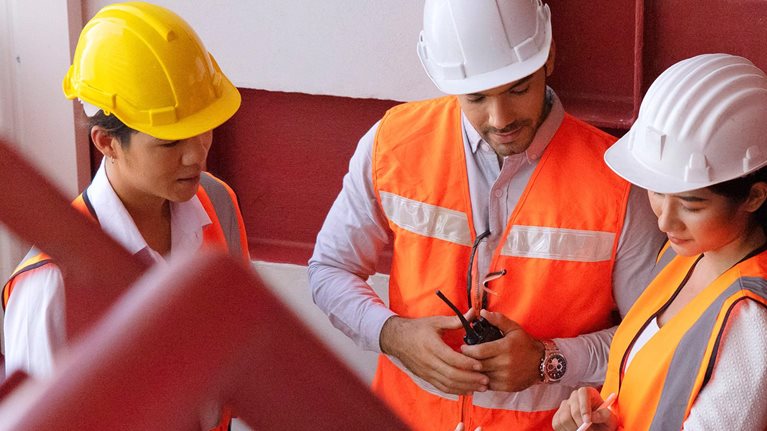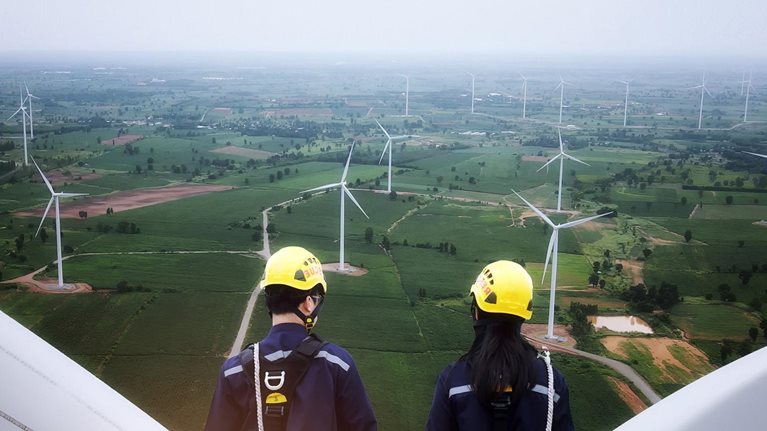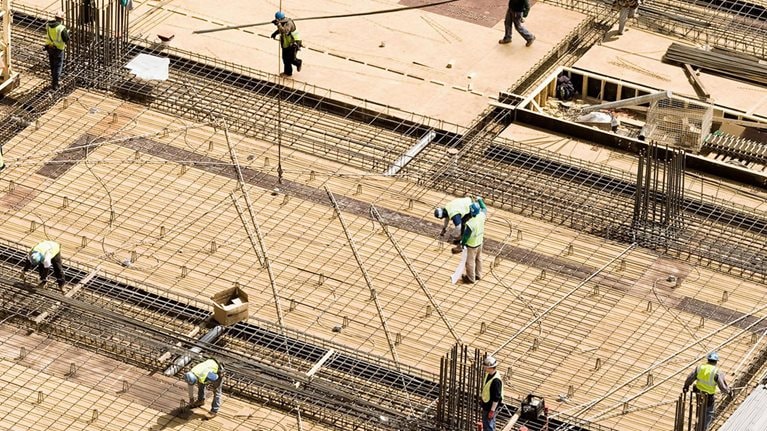In the October 2018 edition of Voices, we wrote about the role of cultural change1 in reducing bottlenecks, increasing innovation, and overcoming the widespread inefficiencies that beleaguer so many large-scale infrastructure projects. As we move through this decade of action on climate change, organizations involved in infrastructure—whether policy makers, planners, financiers, developers, or operators—must consider how the demands and capabilities of leadership will change.
In the past, infrastructure leaders, many of whom come from an engineering or technical background, haven’t always been known for—or didn’t have to employ—soft skills. In this era of net-zero emissions, however, as the sector adopts novel technologies and adapts to new ways of working, many leaders will be forced outside their traditional frame of reference and will need to develop new capabilities, including interpersonal skills, to encourage people to change their behaviors and mindsets.
In this article, we explore the leadership attributes and capabilities we believe infrastructure companies will need as they move along the sustainability maturity curve, as well as the cultural shifts leaders will need to drive in their organizations.
We expect many of these issues to be discussed at the 2022 Global Infrastructure Initiative Summit in Tokyo as part of the “Leadership and workforce development” content pillar.
Would you like to learn more about our Global Infrastructure Initiative?
A new imperative for infrastructure leaders
As sustainability considerations come to the fore, the rising complexity of projects will mean more frequent interactions with partners up and down the value chain. To be effective in a more interdependent world, employees at all levels will need to be able to call upon a range of soft skills, including the ability to influence those outside their sphere of control. The most senior executives will need to effectively convey purpose, focus on outcomes, and learn to facilitate collaboration and exert influence among a partnership of different entities at the organizational level.
Purpose attracts people and capital
Given the social significance and environmental footprint of most infrastructure projects, there is a growing expectation among employees, investors, and other stakeholders that projects will be designed sustainably and implemented in a way that creates long-term value.
Today’s leaders must first genuinely believe in rising to their organizations’ societal purpose; they must then convince stakeholders that they believe in this shared mission. And they are more likely to succeed in doing so if the leaders’ own rewards are linked to employee satisfaction and engagement as well as environmental, social, and governance (ESG) targets.
Competition for talent is fiercer than ever, especially for hard-to-abate sectors such as infrastructure that have not been natural destinations for sustainability-oriented talent. To attract and retain the best talent, particularly much-needed IT talent from outside the sector, infrastructure leaders must communicate the societal purpose behind their organizations’ activities with clarity and authenticity.
Next-generation leaders will need to have a strong sense of purpose about their work, articulate the organization’s purpose coherently and convincingly, and see sustainability and strategy as fully integrated concepts.
Leaders must focus on outcomes
Purposeful leadership is necessary but not sufficient. Leaders—and the people they hire—must have a laser-sharp focus on results.
Successful leaders will always be measured by outcomes. However strong their sense of purpose, it is their leadership authority that will likely determine how successful they are in managing risk and driving results without compromising safety.
There will, of course, be trade-offs. Completing high-quality projects on time and within budget in a way that meets emissions reduction goals will be a unique challenge for infrastructure leaders. They will confront difficult decisions, particularly when faced with inflation and a rising cost base.
As a consequence, leaders will have to work with stakeholders across the value chain to modify or replace the traditional economic metrics against which the success of infrastructure projects is assessed. This will test not only their strategic skills but also their powers of persuasion.
Collaborate and influence on the path to net-zero emissions
To reduce emissions, infrastructure leaders must embrace creativity and collaboration, both of which fall outside the normal frame of reference for many. Lasting change will occur at scale, however, only by industry leaders forming cross-sector and cross-disciplinary alliances.
Few of today’s leaders built their careers on industry collaboration, alliances, or cross-sector partnerships. Yet it is precisely this systems-thinking mindset that will spur lasting impact as we work toward net-zero emissions. This is all the more reason for leaders to consider executives without traditional infrastructure backgrounds and hire lateral thinkers who will stretch outside their silos, challenge assumptions, and approach problems from different angles.
We also expect that infrastructure leaders will need to use their influence in advocating for changes in legislation to accelerate innovation and investment in decarbonization and green tech. Voluntary efforts are clearly not enough to move the dial. As one CEO recently told us, “Technology is moving faster than expected. We have the technology and the capital—now we need the policies to make this transition happen.”

Voices on Infrastructure: Building resilient infrastructure supply chains
What next-generation infrastructure leaders need
We examined the dominant cultural styles and leadership capabilities that characterize each of the four infrastructure domains today (Exhibit 1). We then conducted a gap analysis to identify key characteristics for next-generation leaders who can ensure competitive advantage for their organizations in striving toward net-zero emissions imperatives.

In the following sections, we offer guidance for policy makers and planners, finance leaders, developers, and operators to help situate their specific roles within the industry ecosystem. We identify changes to culture and capabilities that will need to be reflected in leadership teams of the future.
Policy makers and planners
Of all the participants in infrastructure projects, it is governments, policy makers, and planners who are best placed to create the conditions for long-term, sustainable value creation. In democratic societies, making the investment case to an electorate will require purpose-driven leadership, a willingness to learn from mistakes, and the ability to collaborate with and influence stakeholders across the infrastructure ecosystem (Exhibit 2).

Finance leaders
For financiers of long-term infrastructure projects, a growing focus on ESG—and the accompanying need to consider nonfinancial factors in investment decisions—suggests the need for a stronger culture of purpose (Exhibit 3). Fund managers will always be returns-driven. A new generation of financiers is becoming increasingly demanding about emissions, diversity, and social impact; despite having guaranteed returns over the period of the investment, they will seek to influence sustainable outcomes in the development and construction processes. They will also look at opportunities to invest in companies that will gain a longterm competitive advantage as a result of their approach to ESG.

Developers
Engineering, procurement, and construction organizations lie at the heart of the infrastructure ecosystem. Their success will depend on the ability to create effective alliances and attain shared goals with government planners and asset owners. Their cultures will need to promote interdependence, learning, and flexibility as workforces adopt new low-carbon technologies and sustainable practices (Exhibit 4). Leaders will need to effect this change by collaborating across the value chain and focusing on building the right talent while still tightly controlling costs and safety.

Operators
A culture of safety and the prudent management of risk have been essential for organizations managing and operating infrastructure projects. However, as projects become more complex and new sustainability-focused technologies emerge, there must be a greater emphasis on learning (Exhibit 5). And as joint ventures become more complex, leaders will need to demonstrate a willingness to collaborate with and influence third-party organizations.

Learning and innovation are the new watchwords
A common thread for infrastructure leaders of all stripes is that learning will need to be a high priority for their organizations, as well as for themselves. As has happened in many other industries, in infrastructure the leadership tide is turning toward the collaborative and away from the authoritative. Indeed, the steady erosion of command and control attitudes—and of what a recent Institution of Civil Engineers review calls the traditional “heroic” style of leadership2—has been a natural consequence of workforces becoming more diverse, inclusive, and purpose-oriented. It is also necessary for innovation, which usually goes hand in hand with more decentralized decision making.
As new technologies emerge, especially those that smooth the path to net-zero emissions, infrastructure organizations should encourage a growth mindset and a heightened focus on learning while empowering individuals to make decisions within their spheres of influence. Those that succeed will be well positioned to make rapid progress toward net-zero-emissions goals and deliver sustainable outcomes for a wide range of stakeholders.
This article is part of Global Infrastructure Initiative’s Voices on Infrastructure.
Comments and opinions expressed by the authors are their own and do not represent or reflect the opinions, policies, or positions of McKinsey & Company or have its endorsement.


